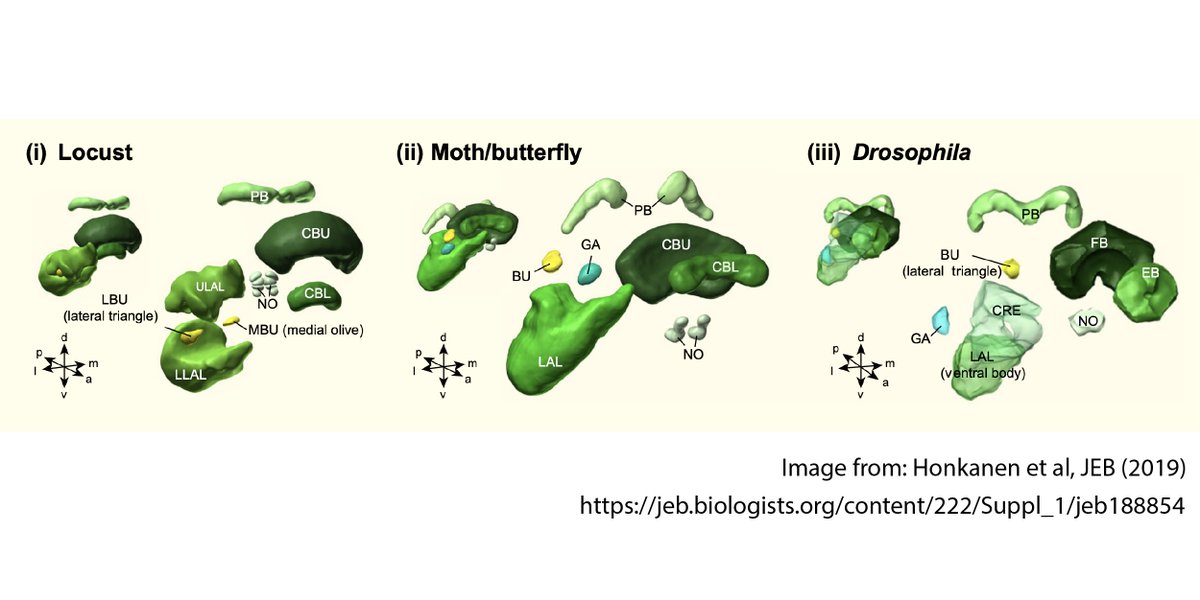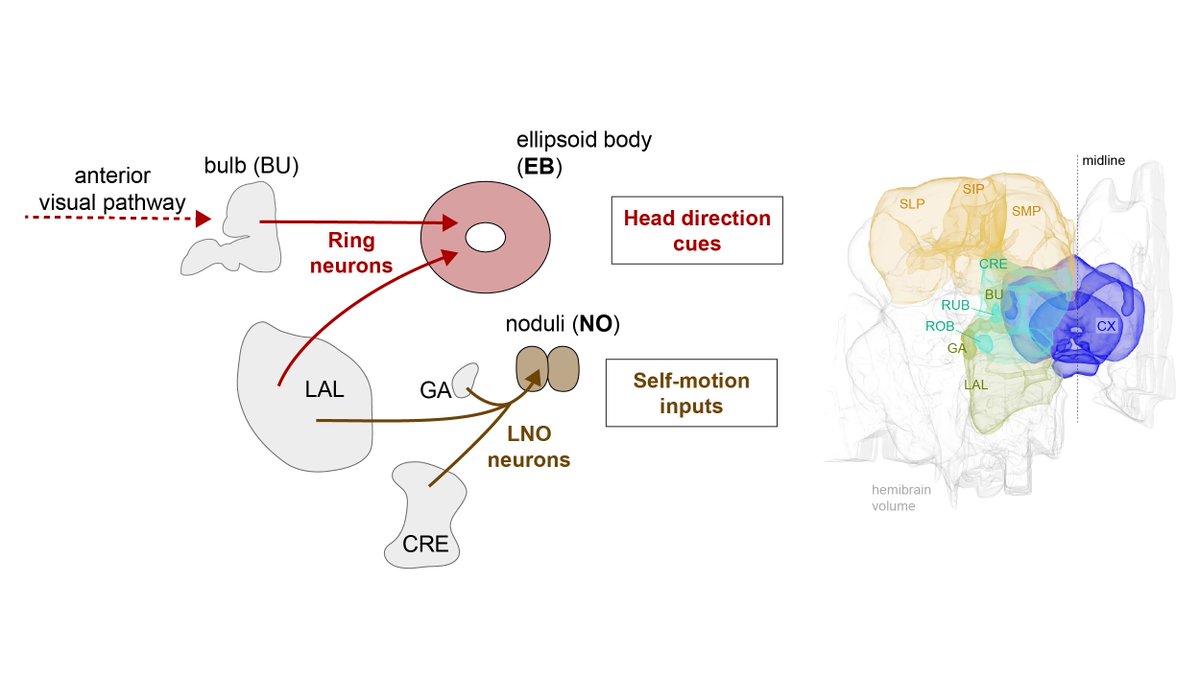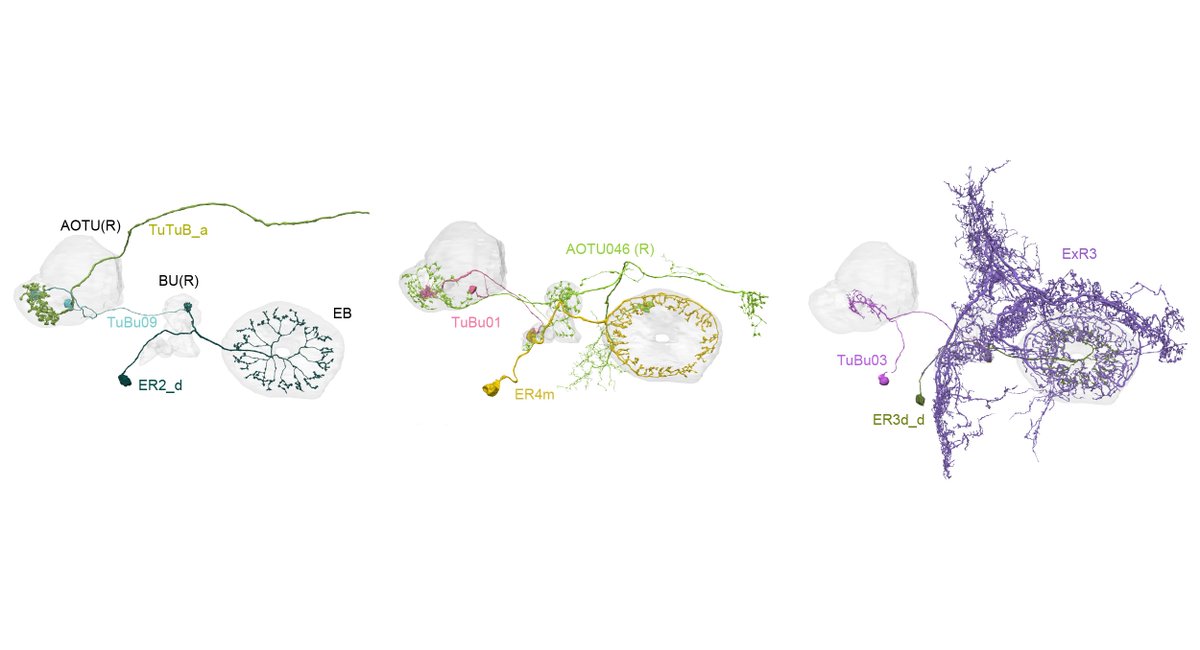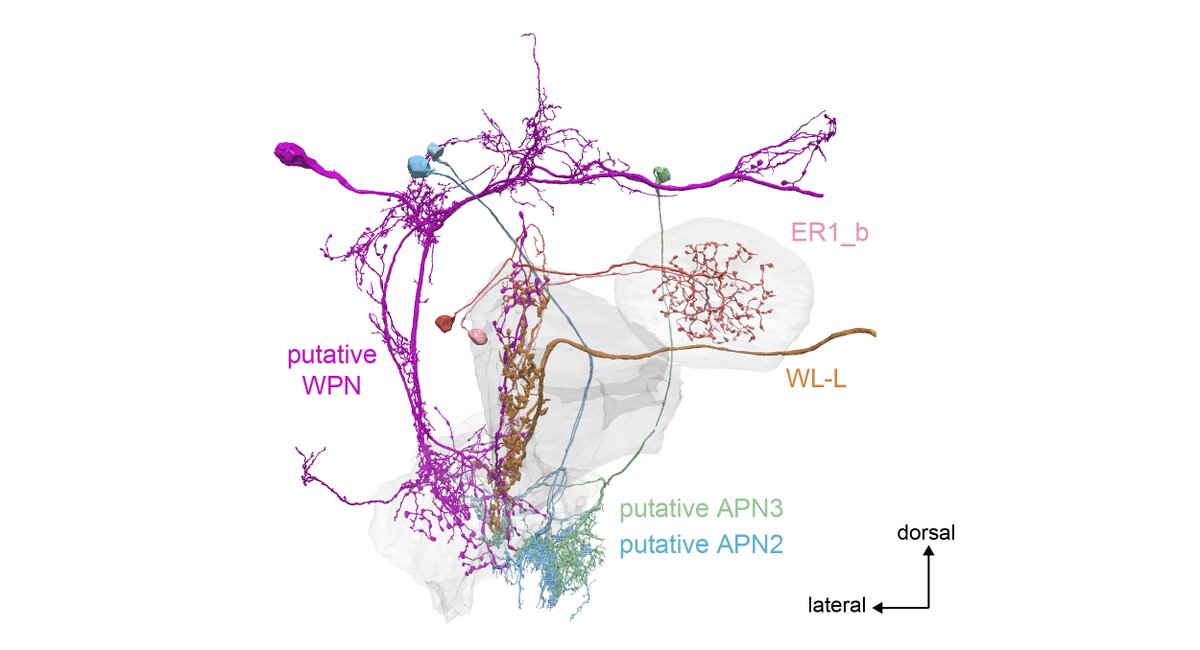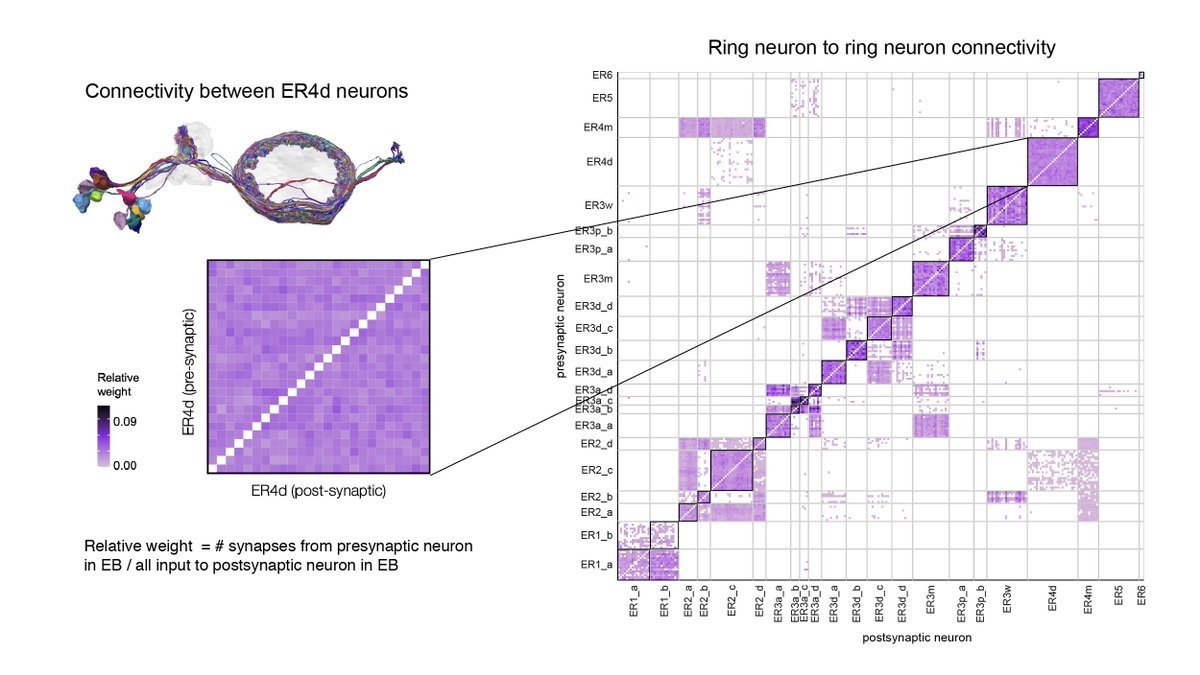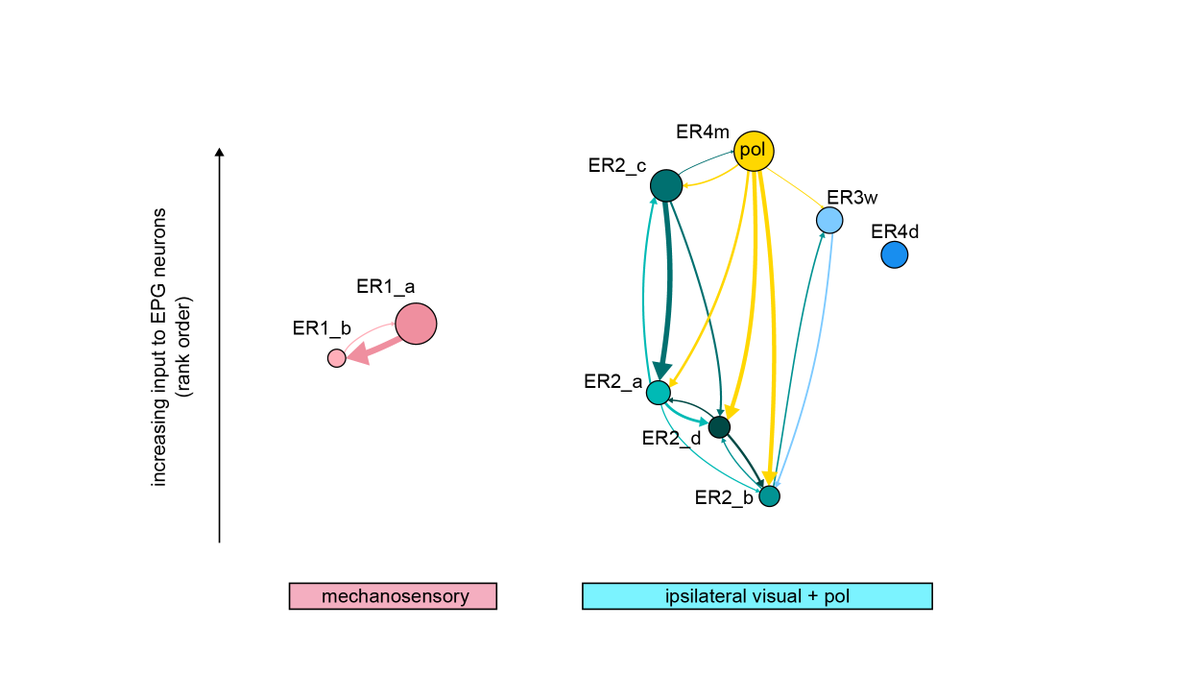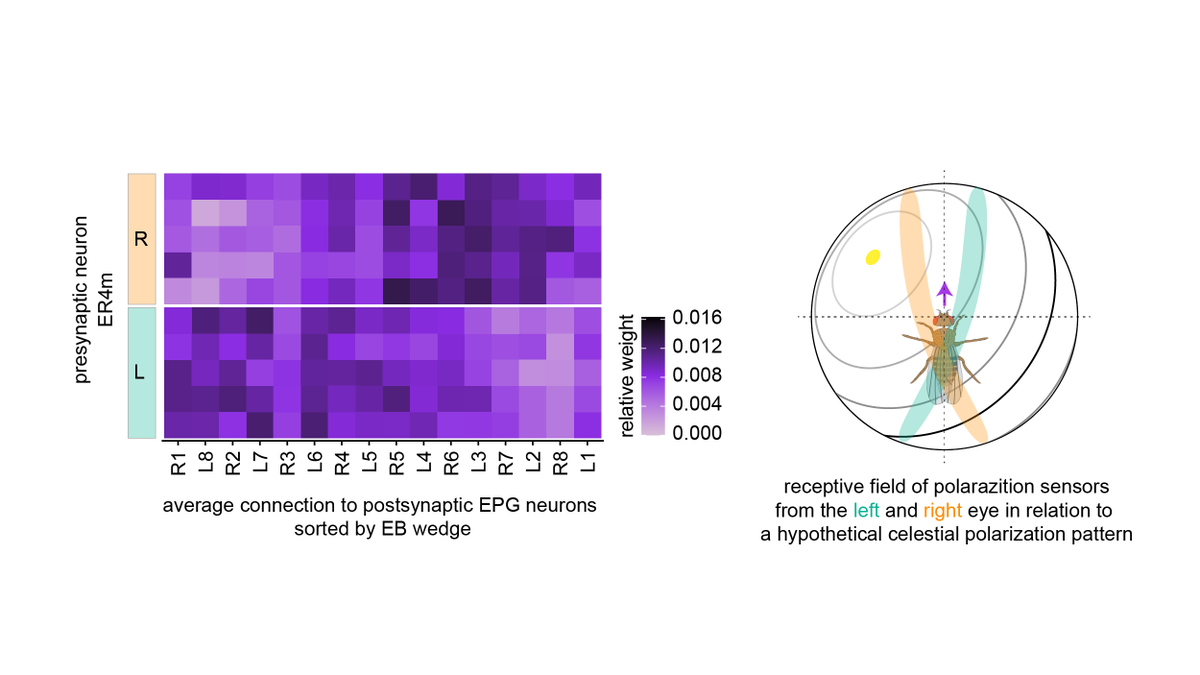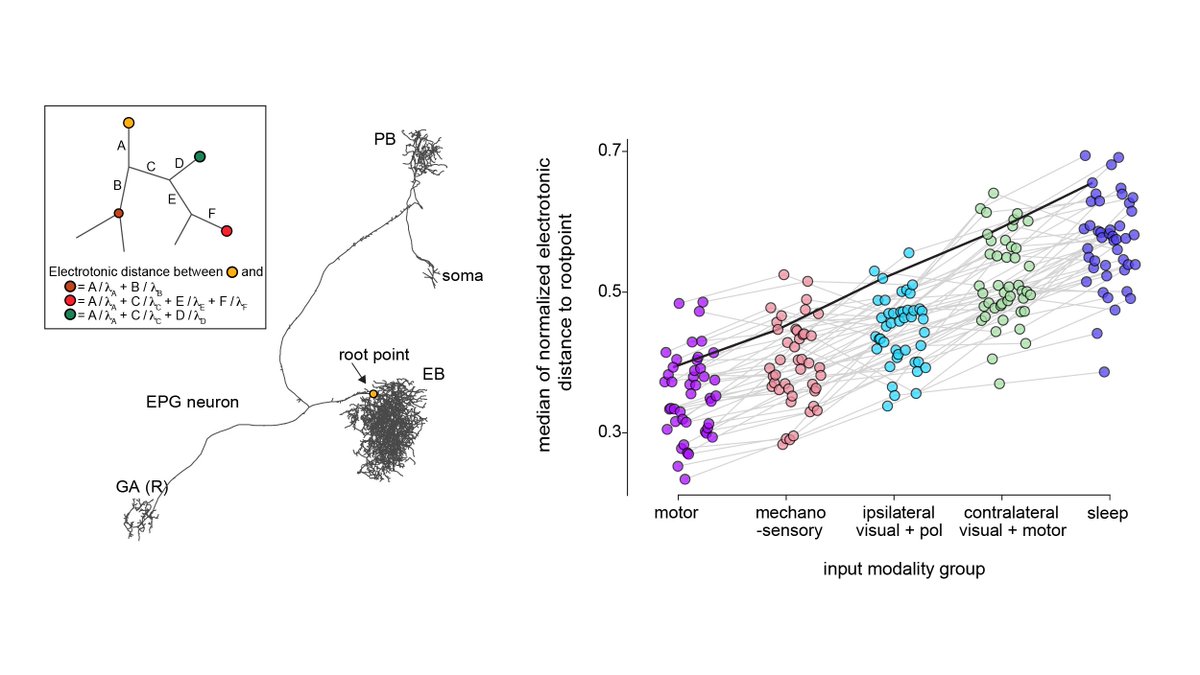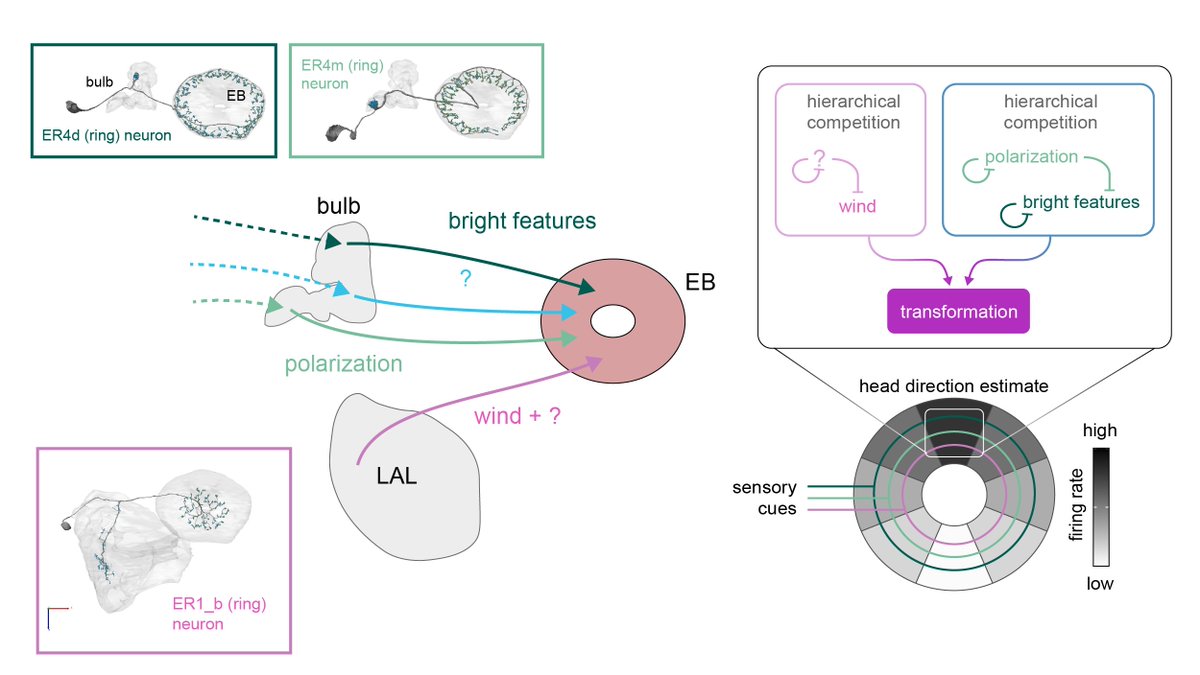Let’s start the New Year with a tour of the fly central complex! Read on to learn about circuit motifs that may help insects with integrating diverse sensory information, construct a stable head direction estimate & more.
All covered in detail here: https://www.biorxiv.org/content/10.1101/2020.12.08.413955v2
0/n
All covered in detail here: https://www.biorxiv.org/content/10.1101/2020.12.08.413955v2
0/n
Since there is a lot of ground to cover, we ( @BradKHulse @RFranconville @DanTurnerEvans1 & I) prepared 4 threads, each covering different parts of our December preprint. I’ll start us off with inputs to the CX.
1/n
1/n
The CX is a highly conserved structure that has been linked to orientation and navigational behaviors in a range of insect species; thus, our findings in the Drosophila connectome may well generalize to other insects.
2/n
2/n
Insects use a wide range of sensory signals for orientation, such as visual landmarks, the polarization pattern in the sky, wind direction, optic flow...
3/n
3/n
We analyzed 2 important input pathways of to the CX:
(1) directional sensory cues to the EB, which tether the fly’s head direction (HD) system to its surroundings, and
(2) self-motion inputs through the NO, which can also update the fly’s compass.
4/n
(1) directional sensory cues to the EB, which tether the fly’s head direction (HD) system to its surroundings, and
(2) self-motion inputs through the NO, which can also update the fly’s compass.
4/n
The ER (ring) neurons (so called because they form beautiful ring-shaped branches along the circumference of the EB) convey wind, visual and potentially other sensory information to the fly’s HD system.
5/n
5/n
Visual inputs to the HD system reach the CX via the anterior visual pathway. Visual information is conveyed by largely separate channels that converge at the level of the compass. The anatomical organization in multiple brain structures reflects this functional separation.
6/n
6/n
However, along the way, visual information is modulated by inputs from the contralateral hemisphere & inputs from other brain areas (including CX). The type of modulatory input that different neurons receive varies systematically by type & thus by the type of visual channel.
7/n
7/n
Wind and potentially other sensory inputs reach the HD system via a different neuropil, the LAL. See also previous work by @tots_okubo, Marie Suver and others!
8/n
8/n
ER (ring) neuron types likely convey different types of sensory information. As a population, these different ring neuron types represent a “feature map” for specific types of sensory information.
9/n
9/n
A neat plasticity mechanism previously described by @SungSoo_111 and @yvetteefisher et al enables flexible mapping of this information to the “compass”, allowing the fly the find its bearings in different settings.
10/n
10/n
We found that most of the inhibitory ring neurons show all-to-all connectivity within each type. This motif could help select dominant features within the map (ring neuron population code) to tether the “compass” to.
11/n
11/n
Given that many potential guidance signals converge at the level of the fly’s HD system, how are different types of information combined? And how are potential conflicts resolved? We found a number of circuit motifs that could address these challenges.
12/n
12/n
1) Ring neuron types that carry related compass information –– e.g. position of the sun (ER2 neurons) and the celestial polarization pattern (ER4m) –– form suppression hierarchies. This motif may establish a preference for certain sensory cues for updating the HD estimate.
13/n
13/n
2) The strength of connections from ring neurons -> EPG neurons varies between types. Polarization-sensitive ER4m neurons provide the strongest input. For this type, we found a curious connection pattern might help with resolving the ambiguous polarization signal.
14/n
14/n
3) The position of ring neuron synapses along EPG arbors varies systematically with the sensory information that ring neurons carry. Self-motion as well as mechanosensory inputs are positioned to strongly affect EPG activity. Shout-out to @MarcellaNoorman for this analysis!
15/n
15/n
Together, the circuit motifs we described might help resolve conflicts between guidance cues, allowing the fly to maintain a stable head direction representation in a complex, dynamic world.
16/n
16/n
The results described above are one part of a much larger project led in equal parts w/ @BradKHulse @RFranconville & @DanTurnerEvans1, with key contributions from many others.
Check out our updated preprint here:
https://www.biorxiv.org/content/10.1101/2020.12.08.413955v2
n/n
Check out our updated preprint here:
https://www.biorxiv.org/content/10.1101/2020.12.08.413955v2
n/n

 Read on Twitter
Read on Twitter